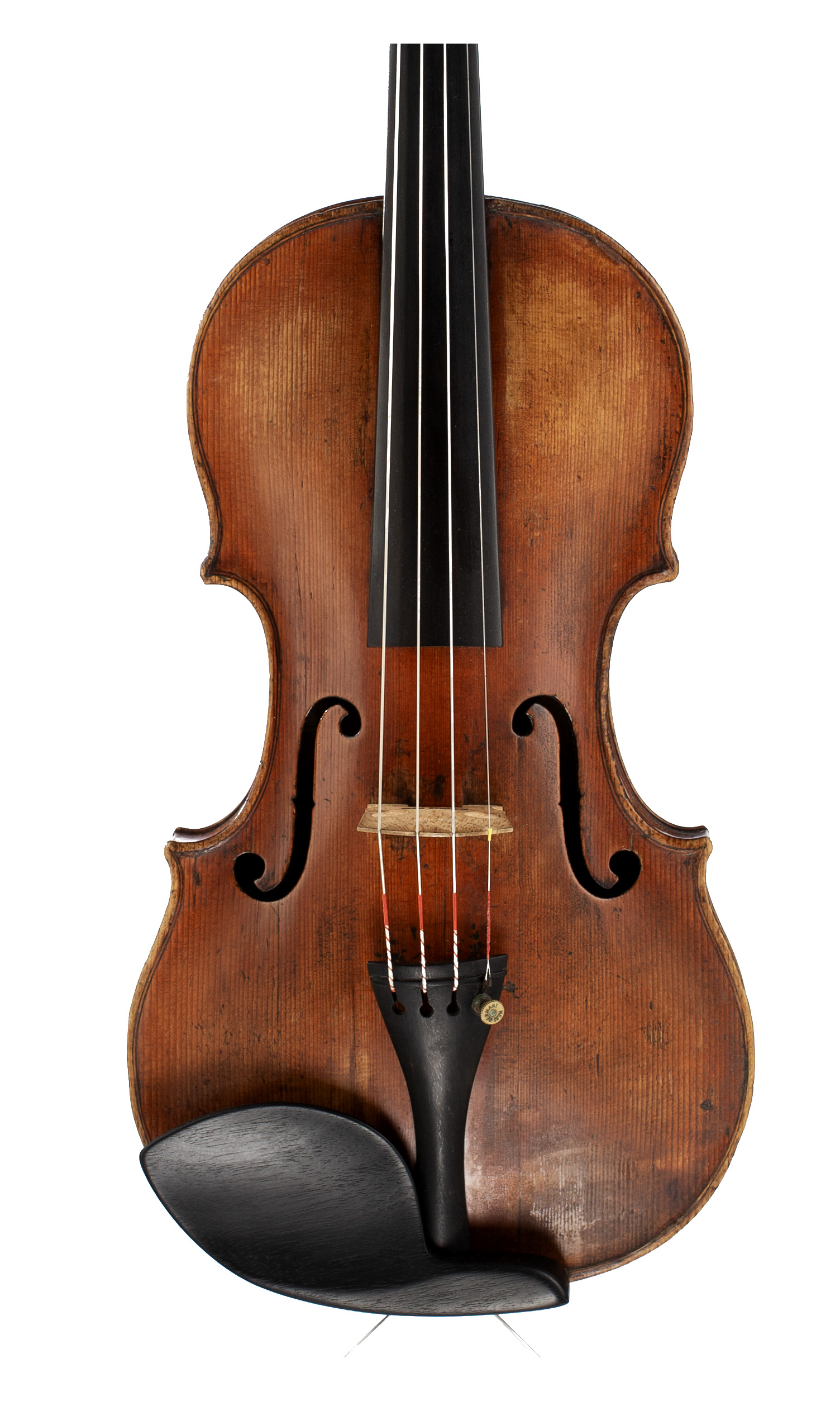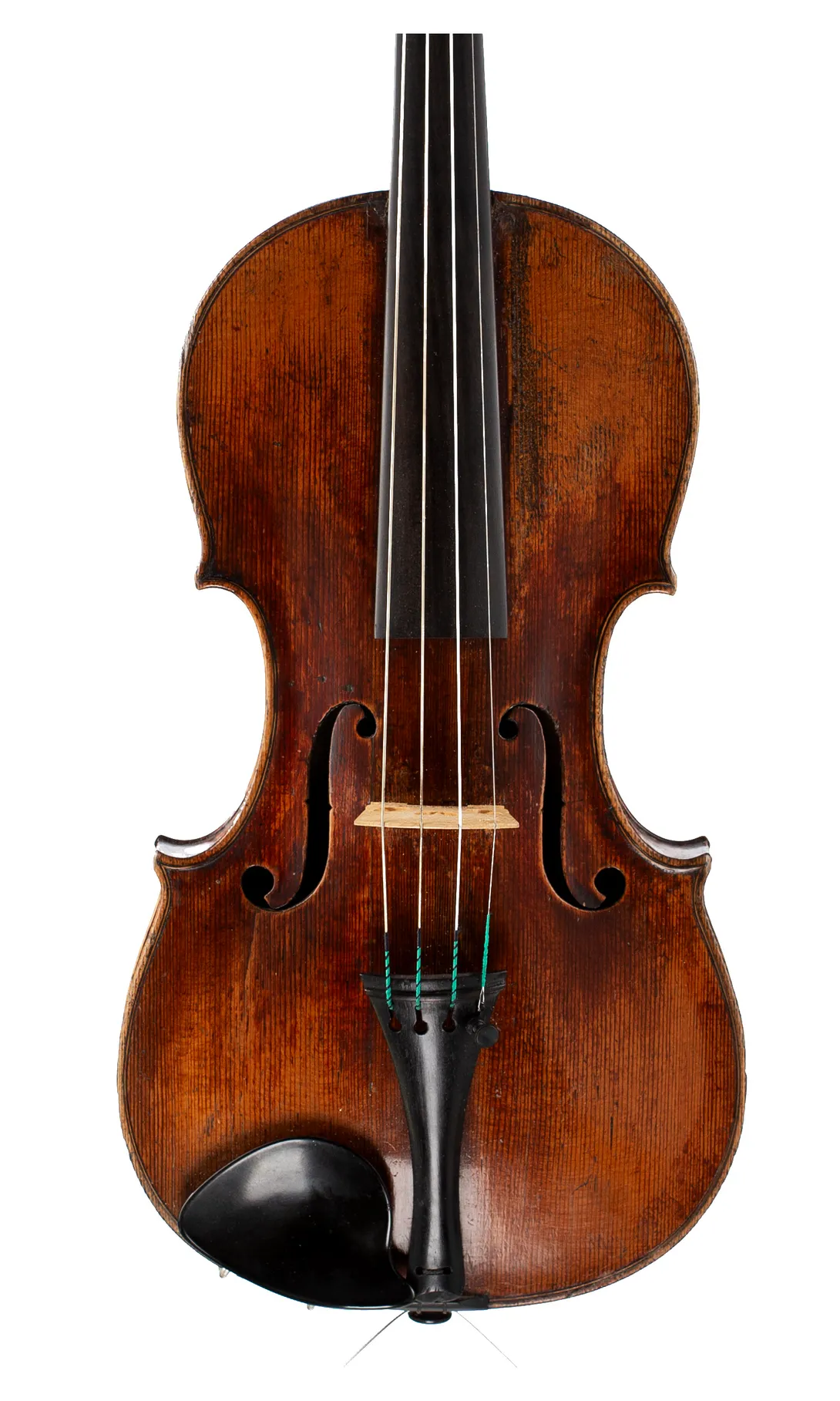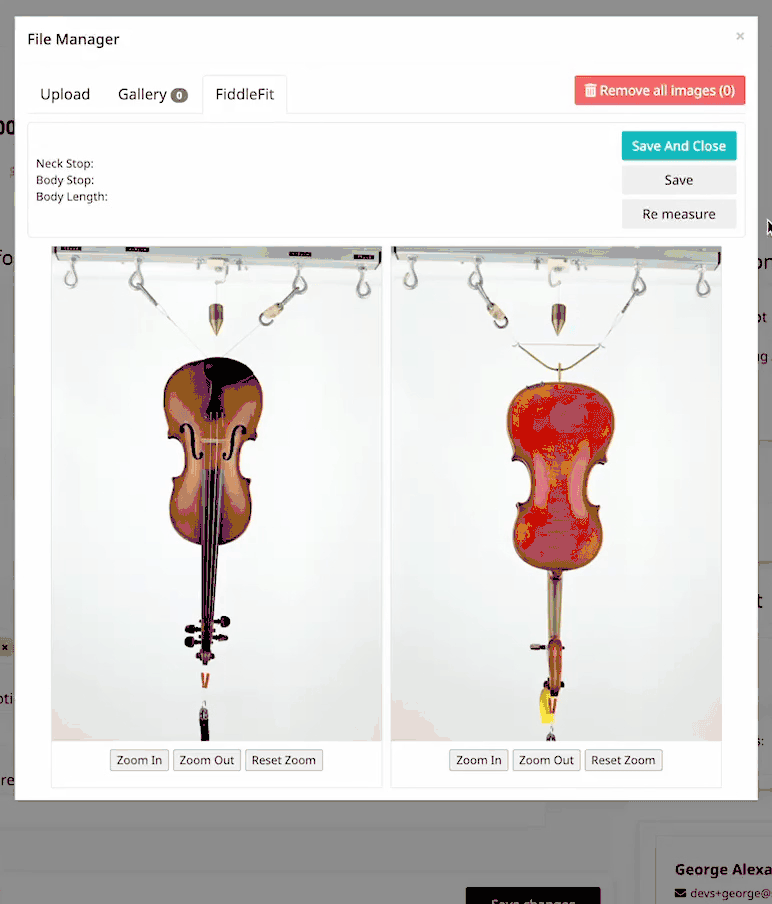



The Gagliano family is the most extensive in the history of violin making. They worked exclusively in Naples, a little isolated from the great workshops in Cremona, Venice and Milan, but kept up a prolific output from around 1700 until the late nineteenth century.
The best known were Alessandro, the founder of the dynasty who worked in an idiosyncratic but very classical style, and Nicola, his son, who seems to have been the most industrious maker.

A third Gagliano deserves more attention than he often gets. Gennaro, the second son of Alessandro and the elder brother of Nicola, was a very fine craftsman whose work is particularly fascinating in its range and variability.
There are several recognisable traits that consistently identify Gagliano work, the most obvious being the beech wood purfling, with delicate black veneers. These workshop habits, including also the layout of the pegs in the head and the distinctive shape of the pegbox itself, imply that the family, as you might naturally expect, shared the same workshop and the same master, and worked together. Nevertheless, they all used their own labels, and tracing the lines of development through the generations indicates that the family did not work consistently together or in the same shop. The two brothers Gennaro and Nicola particularly had a significantly different approach.
What is so interesting about Gennaro is that he carefully and quite accurately copied the work of Stradivari, Amati and Stainer. He seems to have varied his varnish and his technique to suit, and clearly had examples to follow on his bench. This seems unusual in the period.
In recognising the work of different makers from different schools we depend on identifying the style and method of each place and workshop. In the classical period, makers generally seemed to prefer to define their own style of work, and accentuate personal artistic mannerisms which developed from their varying technique with the aim, it would seem, of making their work individual and distinctive. Until the nineteenth century, the idea of making detailed replicas of instruments a century or more older was not common, or even considered. In the mid-to-late eighteenth century, Gennaro had what we might call an unusually academic approach to his copies.
Naples was at the time a wealthy and well-connected city, with a rich musical heritage including Scarlatti and Pergolesi. Not only did the Gagliano family had a discerning market for their work, there were clearly violins of high value from Cremona and elsewhere in circulation and available for study. Without a direct apprenticed connection to the masters of Cremona, Brescia and Venice, the Gagliani depended on observation, and their own origins can be traced back rather to Fussen, and the established lute-makers of 17th century Naples. But it is nevertheless significant that in the eighteenth century they used fine materials, and often with decorative flourishes designed for customers with deep purses.

This violin, labelled and dated 1749, is a clear copy of Stainer. The modelling, sound holes and outline, the aspects that play a particular part in determining the tonal character of a violin, are studiously taken from Stainer, and the purpose in doing this is clearly to try and duplicate the sound, a character seen as distinct from Amati, and certainly from Stradivari. But perhaps more interesting is the scroll, which also imitates Stainer mannerisms. There is no practical reason for doing this. Gagliano could just as easily and effectively added a generic- or shall we say ‘Gagliano school’ head to the acoustic box. But he chose to honour the spirit of Stainer, and make it perfectly sure whose inspiration lay behind the work. The swan-shaped pegbox is accurately followed, and the extra flourish of the eye, with its extended last turn, are both present.
There is no intention on Gagliano’s part of making a ‘fake’. The varnish, a deep red and glassily textured concoction is in not particularly reminiscent of Stainer, and it bears Gennaro’s original label, with no reference on it at all to Stainer. His aim seems to have been to make the best possible representation of a Stainer violin that he could, and to the highest standards of his craft. He did this also in his beautiful renditions of Amati models, quite different in feeling to this. To imagine the processes and ideas, the aims of each individual maker in this fascinating historical period is fascinating, and it is equally fascinating to imagine what the discerning client, a musician or dilletante as well aware of the different styles and schools as we might be today, saw in their work. Gennaro was a fine craftsman with a subtle eye, and an approach that was clearly quite independent from that of the rest of his family. Whether he would have regarded himself as an artist, an artisan or a simple craftsman we cannot know; an innovator he was not, but a fine maker with a high aspirations he certainly was.



